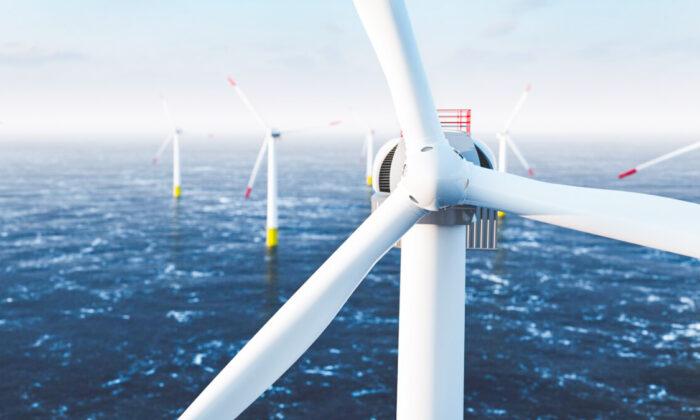Industrial policy—the practice by which governments encourage, support, or protect certain industries—is nearly as old in America as the republic itself. Alexander Hamilton’s “Report on Manufactures” (1791) sought to impose tariffs principally to fund the government. But his tariff policies also had the effect of protecting and encouraging local investment, manufacturing, and industries. Since then, industrial policy has led to the creation of everything from the telegraph to the transcontinental railroad to Google to the Boeing 767 to “Goldfish” snack crackers.
Industrial policy is a staple of industrial and commercial development among state governors and city mayors who offer things such as property tax abatements, industrial parks, direct subsidies, and other incentives to locate businesses—and jobs—within their jurisdictions.
Bad Industrial Policy Comes for All Reasons
Remember President Barack Obama’s Solyndra “investment”? The Department of Energy wrote loan guarantees of more than $500 million to the solar panel manufacturer that it had to make good on after Solyndra went bankrupt. It emerged shortly thereafter that Solyndra’s backers had been big contributors to President Obama’s political campaign. The record is replete with such “favor for a favor,” “tit for tat” political machinations masquerading as industrial policy.But it isn’t necessary for overtly political considerations to undermine sound industrial policy. Sometimes, it’s simply bad decision-making by political leaders. We see it now with certain political leaders who possess a near-dogmatic adherence to the notion of a “climate crisis.” The dogma, in turn, seems to inhibit dispassionate assessments of the technical feasibility, the addressable market, or the actual demand for given “green” innovations that the officials consider.
A Case Study in Failed Industrial Energy Policy
The majority of Danish wind energy developer Orsted is owned by the Danish government, and so is itself Danish industrial policy. Orsted announced on Nov. 1 that it would abandon Ocean Wind 1 and 2, two wind farms that had been planned off the coast of New Jersey, because of “updated assumptions related to tax credits, the timing and likelihood of final construction permits, and increases to long-dated U.S. interest rates,” according to The Wall Street Journal. The company booked a $4 billion impairment from the abandonment.Another wind farm, planned for the coast of Virginia, was canceled by Siemens Gamesa, another wind farm producer, but that cancellation has larger implications for the commonwealth and utility ratepayers there.
Virginia’s then-Gov. Ralph Northam, together with Virginia utility Dominion Energy and the U.S. Department of Energy, went “all in” on wind energy just a couple of years ago. Virginia reportedly offered more than $17 million in “Virginia Public Building Authority bonds to fund infrastructure improvements and site work for the facility, as well as recruitment and training support through the state’s Virginia Talent Accelerator Program to make Virginia’s Portsmouth Marine Terminal the East Coast epicenter of offshore wind energy generation.
It isn’t clear how the now greatly circumscribed mission of the Charybdis vessel will affect the owners of the vessel, Dominion Energy, or its residential and business electric ratepayers. One would imagine the revenues from operating the vessel would be considerably less than planned, given the cancellations. Dominion now has but one viable charter for its costly vessel.
Give Industrial Policy a Hard Look
Much of the problem with large-scale government industrial policy, particularly industrial policy aimed at innovative—shall I say “revolutionary”?—technology is that such technology may require considerable governmental, or mandated consumer, investment or spending. The allure of “free” money from, or mandated by, government tends to skew the analysis of the economic viability of a given project to make the proposal more attractive than it may actually be.- Assess the project assumptions with stress tests. The Orsted project, for example, was canceled, in large part, because the costs of borrowed capital soared from the time that it was adopted to the time that it could start to be implemented. The costs for Charybdis soared by 25 percent—to $625 million from $500 million—from the time that it was ordered until now, and it still isn’t completed. Meanwhile, long interest rates jumped several percentage points.
- Assess independent and dependent variables that are critical to the proposed project’s core mission. The economic viability of Charybdis was dependent on the successful implementation of multiple wind farms, which had their own independent and dependent variables. The failure of one or more of them impaired the reason for Charybdis to be built. Dominion Energy should have put in place robust guarantees from Orsted and Siemens Gamesa customers for cancellations.
- Assess the alternatives before choosing a course of action. Are offshore wind farms the best alternative source of energy, or is it simply green energy dogma? Small modular reactors (SMRs) are akin to the reactors that have safely run the U.S. Navy submarine fleet for nearly 70 years. And while they, too, have implementation challenges, one should have asked Mr. Northam and his team whether they had even considered SMRs.
- Assess the marketplace. The New York offshore wind farm was rejected by the state’s Public Service Commission because it would have required higher utility bills for the utility ratepayers in the affected areas. Like other elements of the production of the project, customer demand for a given technology should be subject to a stress test to see if it’s affordable for the customers whom it’s intended to serve.







